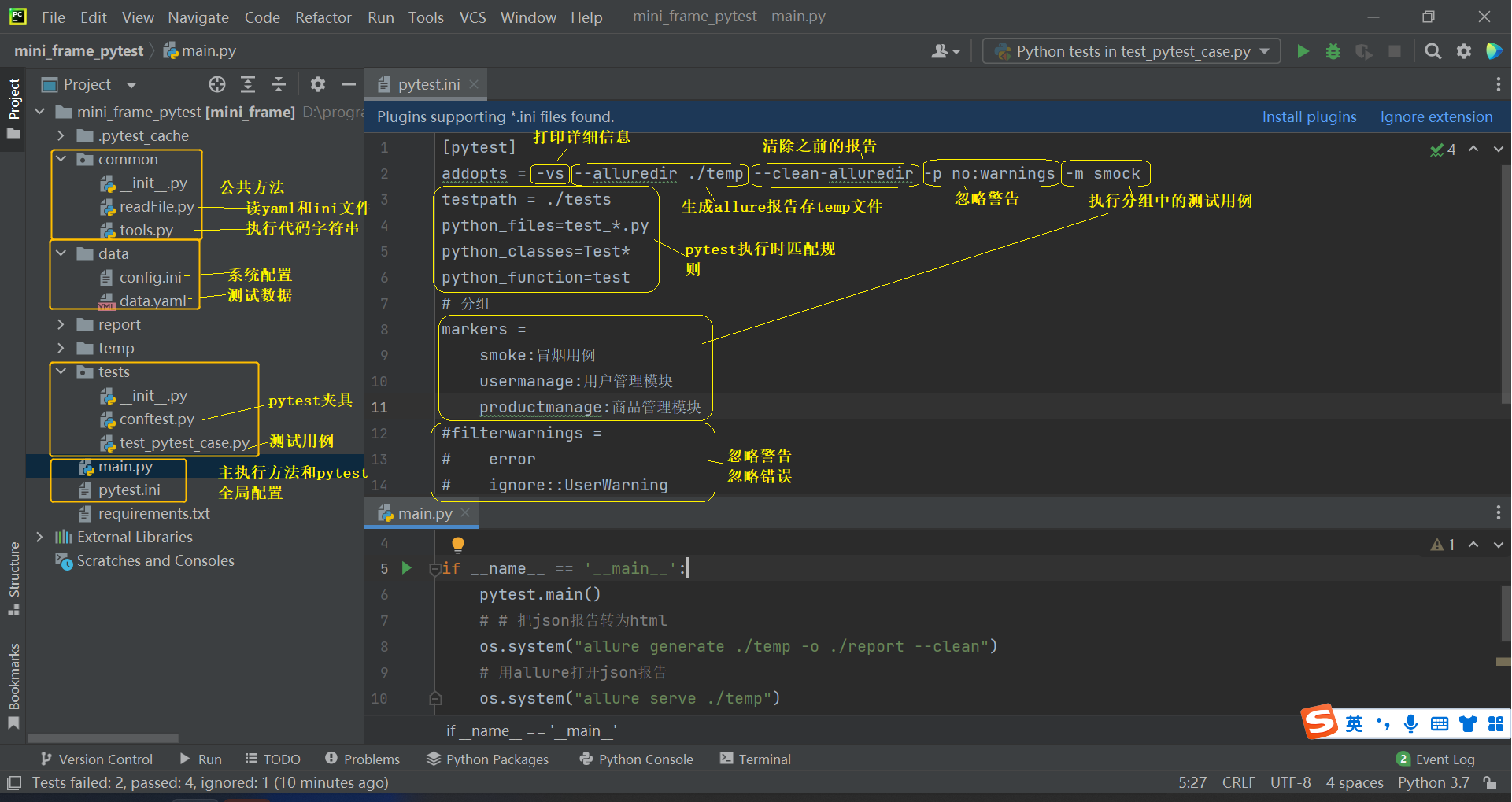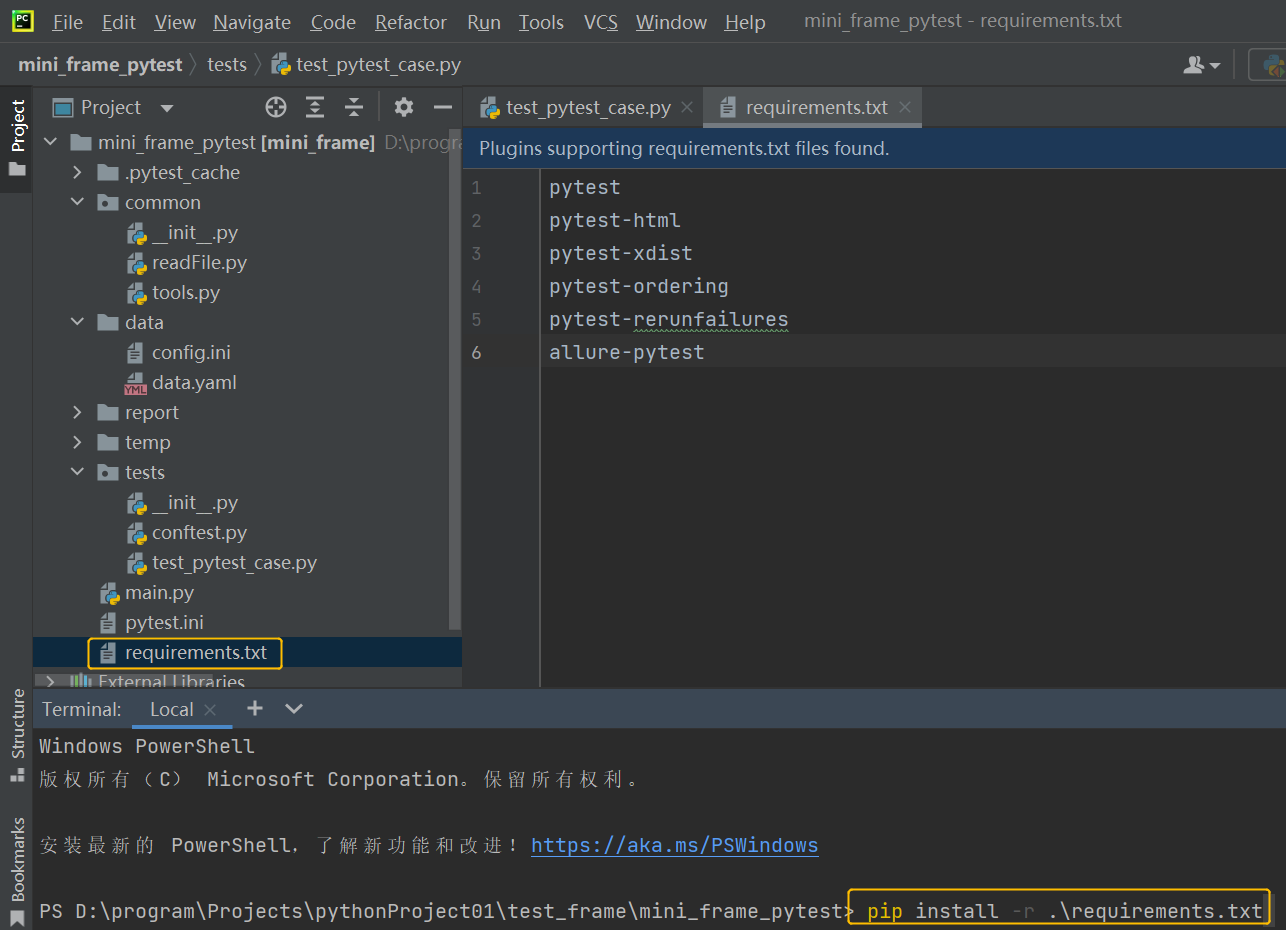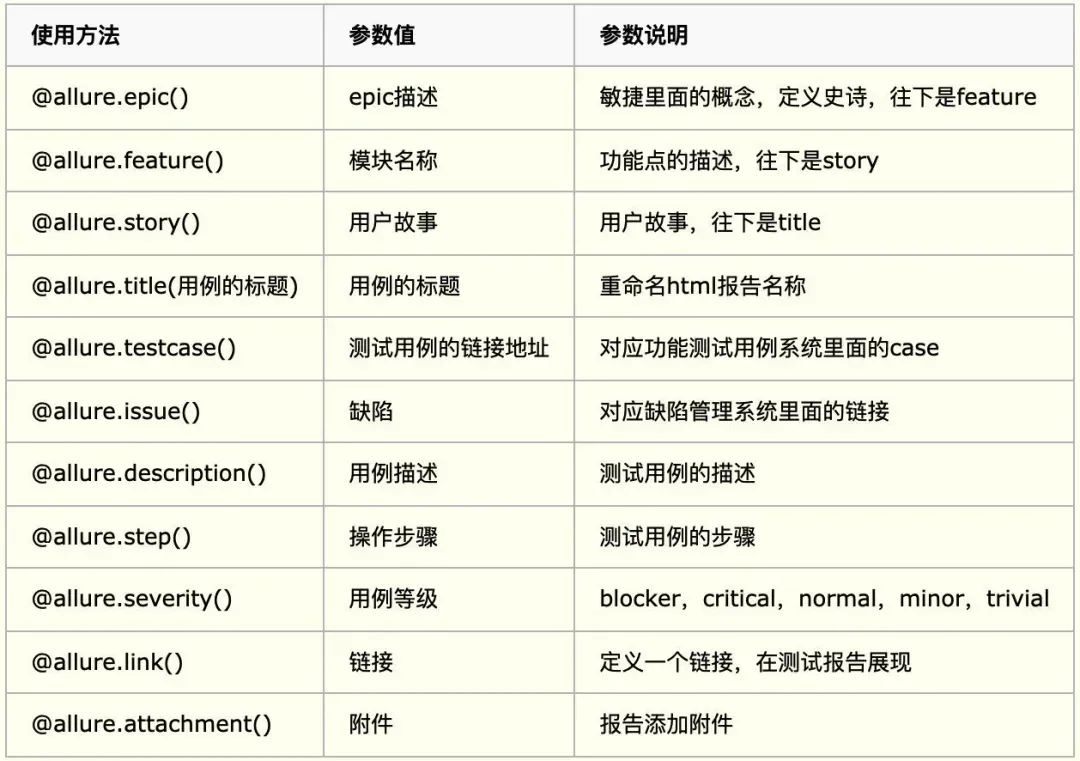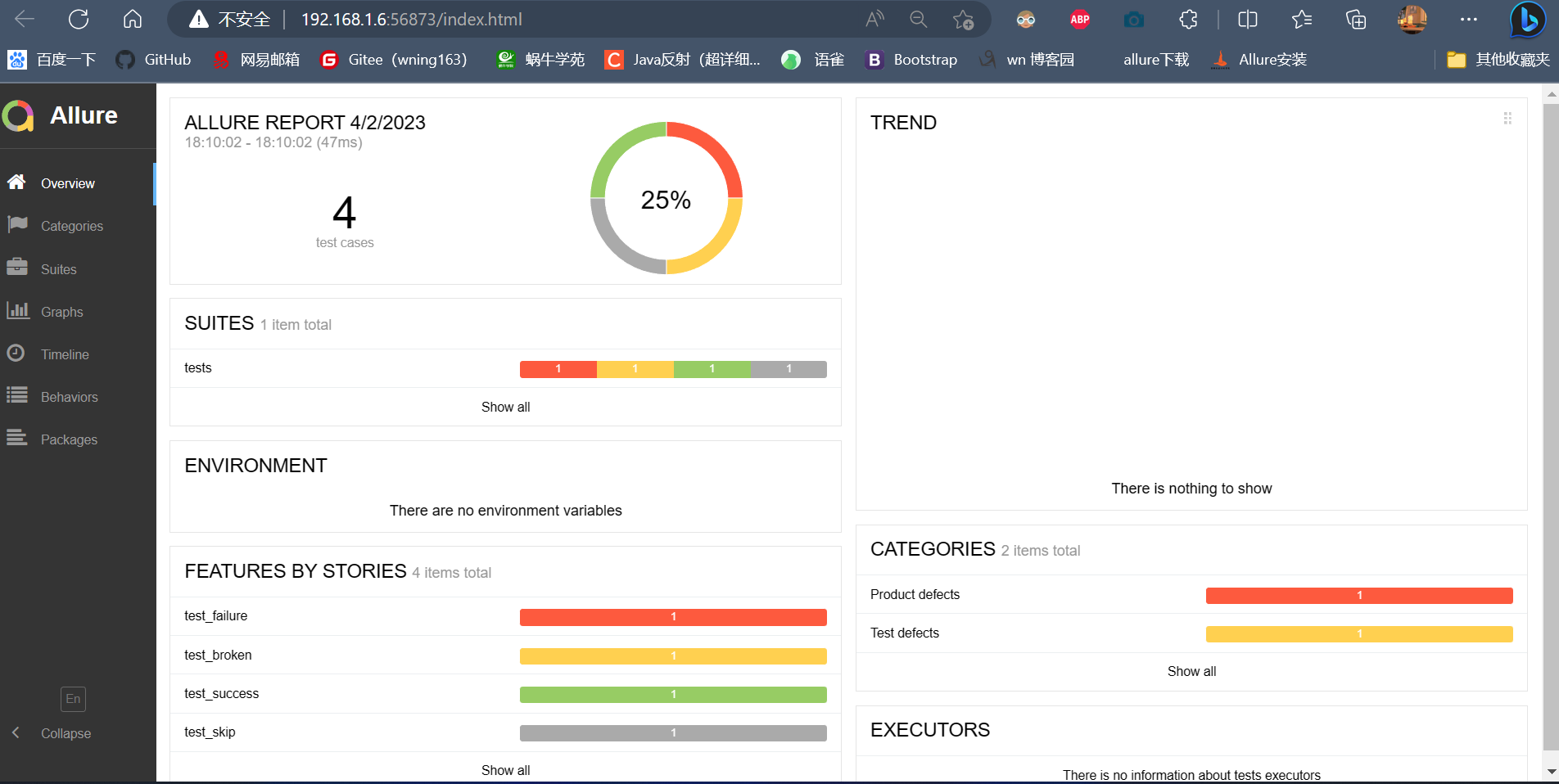简介
- 分层 common公共层 data数据层 test层+main文件
- 其中pytest框架使用pytest.ini全局配置和conftest.py夹具

test层
- 下载对于的安装包
- 编写对于的用例
- 实现参数化
- 编写对于的fixture和pytest全局配置
常用pytest执行方法
main方法: pytest.main(['-vs','-n 2'])
console: pytest -vs -n 2
pytest.ini文件: addopts = -vs -n 2
常用命令
-v 详细信息
-s 输出打印信息
-n 多线程跑
--reruns 失败重跑
-m 执行分组
-k 执行包含该字符串的
下载对于的依赖

代码展示
import pytest
import requests
from common.readFile import re_yaml
from common.tools import dic_execute
from common.readFile import re_conf
class TestCase:
# 分组--参数化
@pytest.mark.smock
@pytest.mark.parametrize("dic", re_yaml())
def test_demo1(self, get_csrf, get_config, dic):
# 获取基础配置
base_url = get_config
# 用夹具获取cookie和token
cookie, token = get_csrf
# 测试标题
print(dic['description'])
# 拿测试数据,发请求
info = dic_execute(dic['data'])
url = base_url + "users"
data = {
"id": 11,
"name": info['date'],
"username": info['user'],
"datetime": info['pwd'],
"token" :token
}
res = requests.request('post', url, data=data, cookies={'cookie': cookie})
print(res.text)
assert res.status_code == info['assert']
# 排序
@pytest.mark.run(order=1)
def test_demo2(self, get_config):
print('测试pytest demo2')
assert 1 == 2
# 跳过
@pytest.mark.skip("版本原因跳--过")
def test_demo3(self, get_config):
print('测试pytest demo3')
#分组
@pytest.mark.smock
def test_demo4(self, get_config):
print('测试pytest demo4')
if __name__ == '__main__':
pytest.main()
夹具conftest.py文件
import re
import pytest
from common.readFile import re_conf
@pytest.fixture(scope="class")
def get_config():
"""
读取配置信息
"""
print("setup_class 读取config.ini文件信息")
base_url = re_conf("http", "baseUrl")
return base_url
@pytest.fixture(scope="class")
def get_csrf():
print("get_csrf get请求,获取响应页面")
mock_response_text = '''
<html>
<head>
</head>
<body>
.....'name'='crsf' token='token123abcdefg123'
</body>
</html>
'''
cookie = "ADFBE response.cookie()"
token = re.search("'name'='crsf' token='(.*?)'", mock_response_text).group(1)
return cookie, token
外层的pytest.ini全局配置
[pytest]
addopts = -vs --alluredir ./temp --clean-alluredir -p no:warnings -m smock -n 2
testpath = ./tests
python_files=test_*.py
python_classes=Test*
python_function=test
# 分组
markers =
smoke:冒烟用例
usermanage:用户管理模块
productmanage:商品管理模块
#filterwarnings =
# error
# ignore::UserWarning
common层
读文件方法
import configparser
import os
import yaml
path = os.path.dirname(__file__)
config_path = os.path.join(path, '../', "data/config.ini")
yaml_path = os.path.join(path, '../', 'data/data.yaml')
# 从ini文件中读取参数
def re_conf(title, key=None, file=config_path):
conf = configparser.ConfigParser()
conf.read(file, encoding='utf-8')
if key is None:
# 读取字段到Section对象
return conf[title]
else:
# 读取具体的值
return conf.get(title, key)
# 读取yaml文件
def re_yaml(file=yaml_path):
with open(file, 'r', encoding='utf-8') as f:
test_data = yaml.safe_load(f)
return test_data
if __name__ == '__main__':
# 方式一
confObj = re_conf(title="http", file="../data/config.ini")
print(confObj)
print("方式一 " + confObj.get("baseUrl"))
# 方式二
data = re_conf(title="http", key="baseUrl", file="../data/config.ini")
print("方式二 " + data)
# 读yaml
print(re_yaml(), type(re_yaml()))
执行字符串代码
import datetime
# 读取文件数据后,把可执行代码执行
def dic_execute(dic: dict):
for k, v in dic.items():
if isinstance(v, str):
if v.startswith('<') and v.endswith('>'):
dic[k] = eval(v[1:-1])
return dic
if __name__ == '__main__':
pass
主执行方法
import os
import pytest as pytest
if __name__ == '__main__':
pytest.main()
# # 把json报告转为html
os.system("allure generate ./temp -o ./report --clean")
# 用allure打开json报告
os.system("allure serve ./temp")
allure
1.需要电脑上安装了allure并且配置了环境变量
windows:下载,解压,并配置环境变量:https://github.com/allure-framework/allure2/releases

常用方法

示例
import allure
import pytest
@allure.feature('test_success')
def test_success():
"""this test succeeds"""
assert True
@allure.feature('test_failure')
def test_failure():
"""this test fails"""
assert False
@allure.feature('test_skip')
def test_skip():
"""this test is skipped"""
pytest.skip('for a reason!')
@allure.feature('test_broken')
def test_broken():
raise Exception('oops')
if __name__ == '__main__':
# pytest.main(["-s","allure-test.py"])
'''
-q: 安静模式, 不输出环境信息
-v: 丰富信息模式, 输出更详细的用例执行信息
-s: 显示程序中的print/logging输出
'''
pytest.main(['-s', '-q','test_allure02.py','--clean-alluredir','--alluredir=allure-results'])
os.system(r"allure generate -c -o allure-report")
